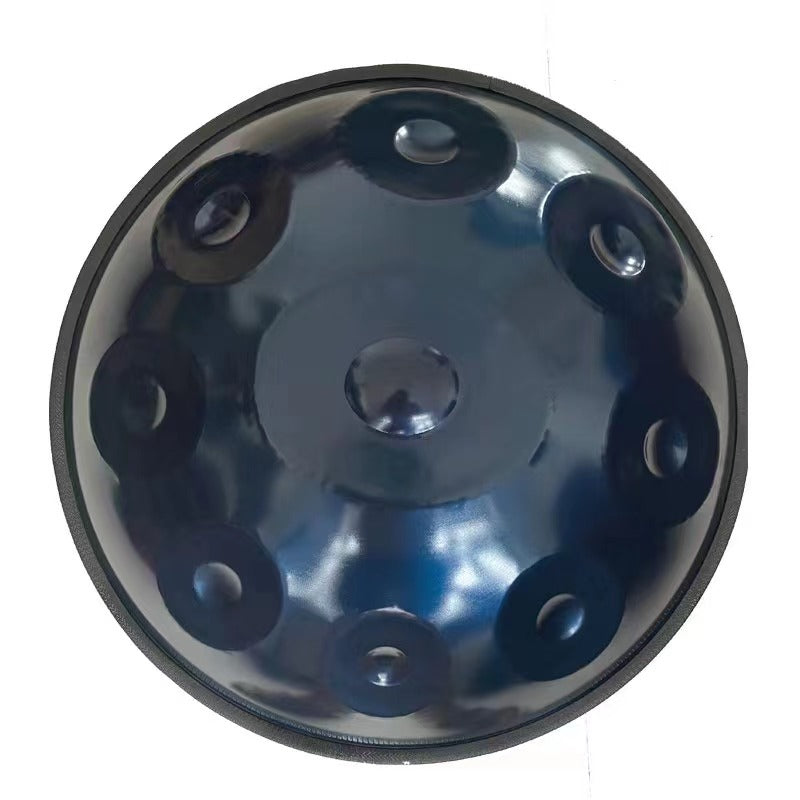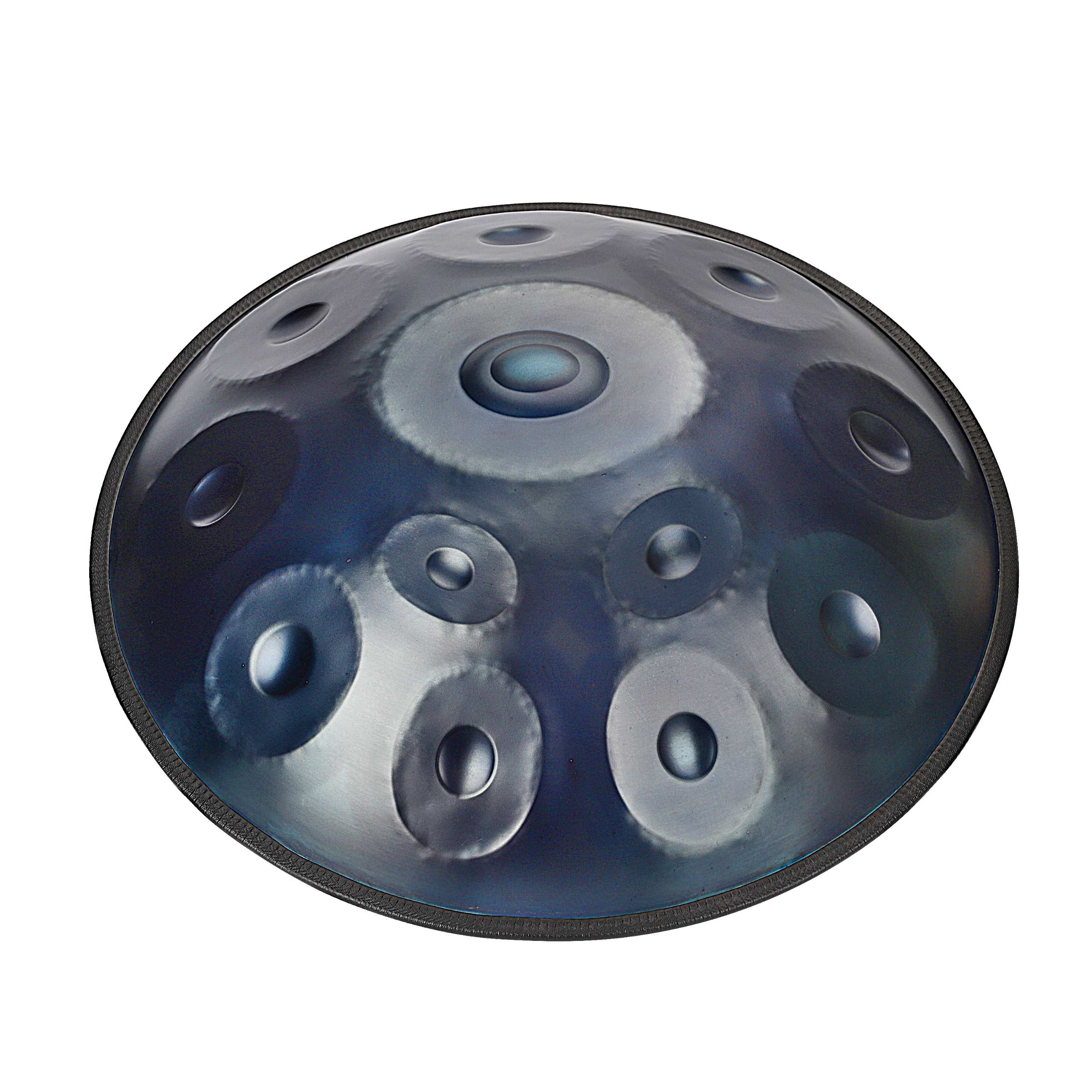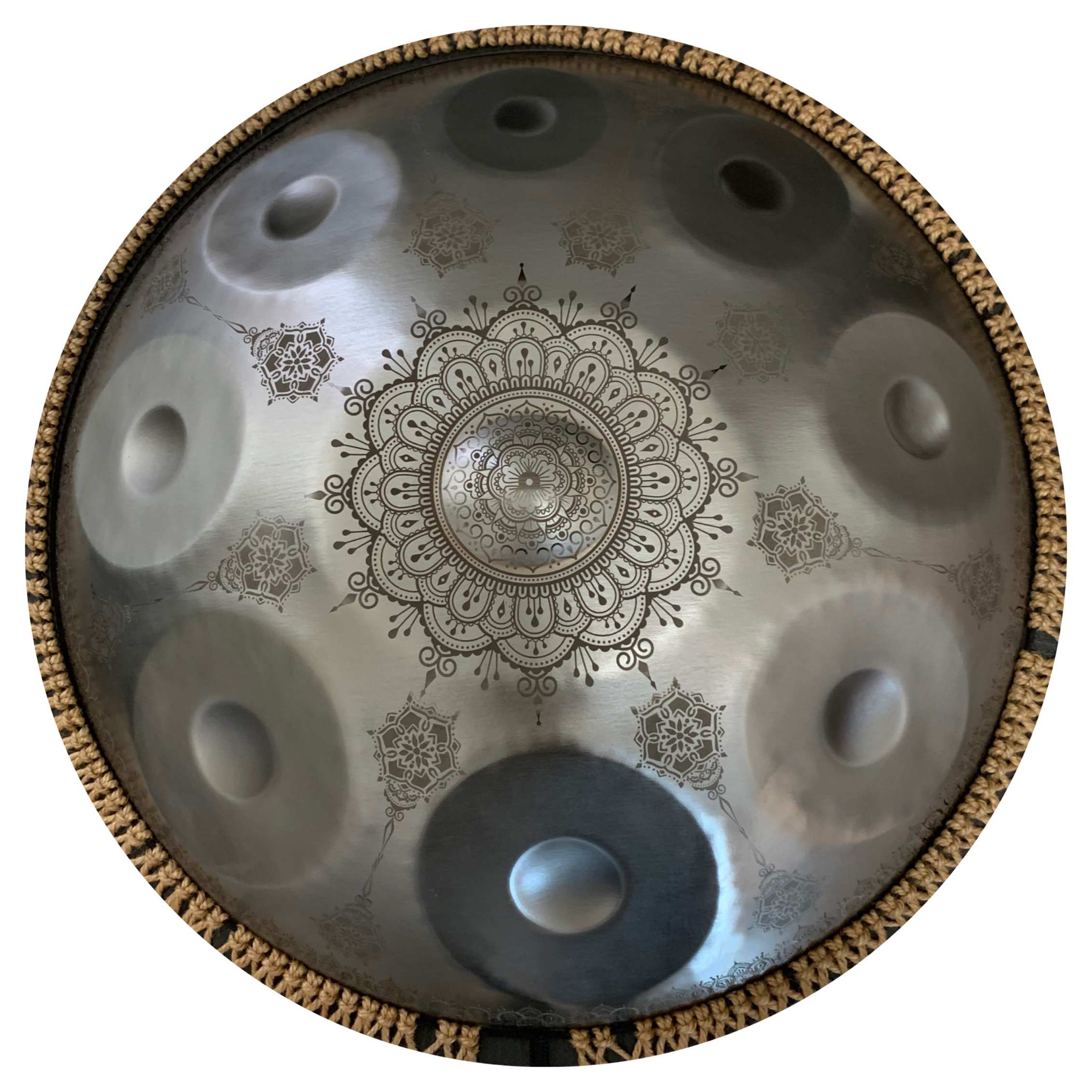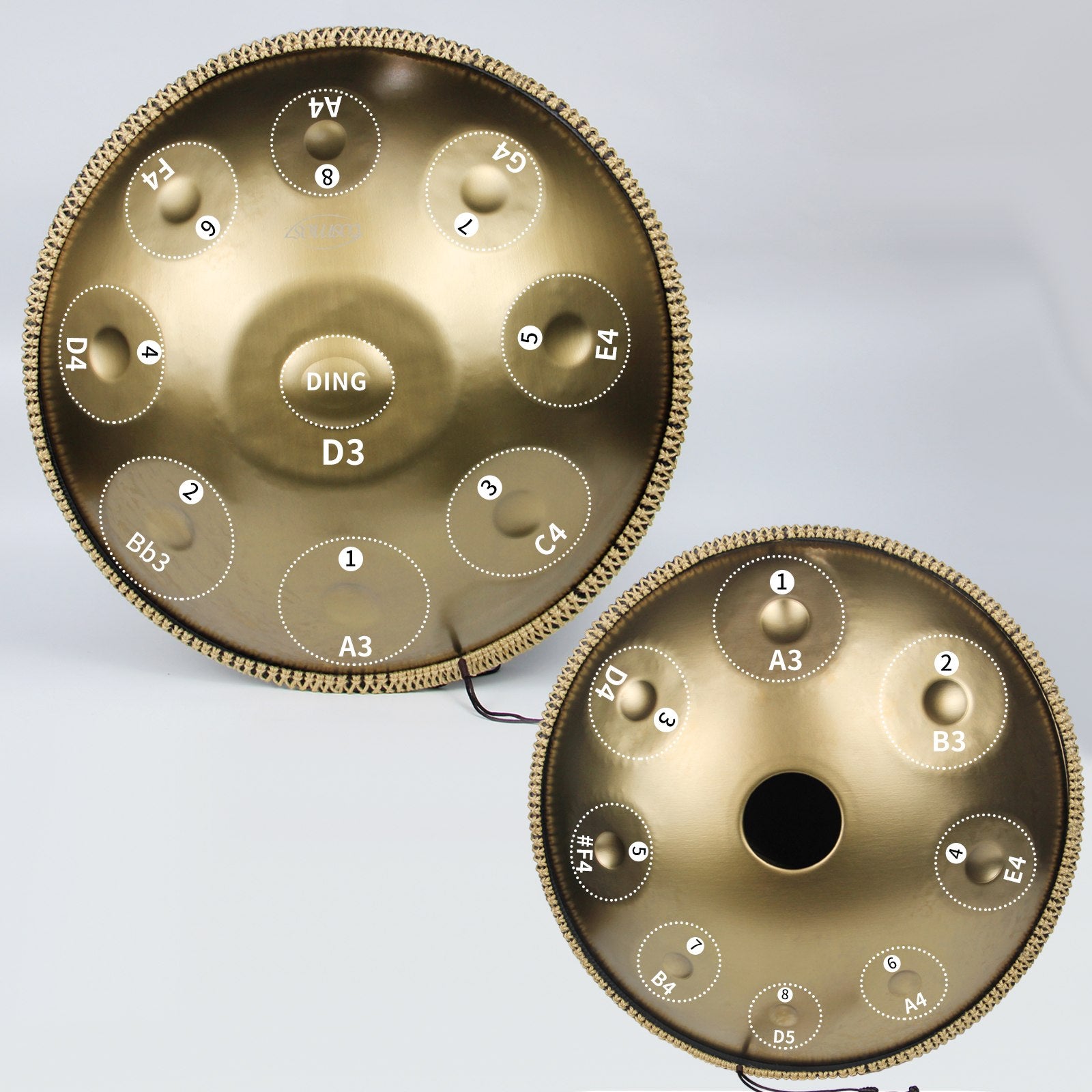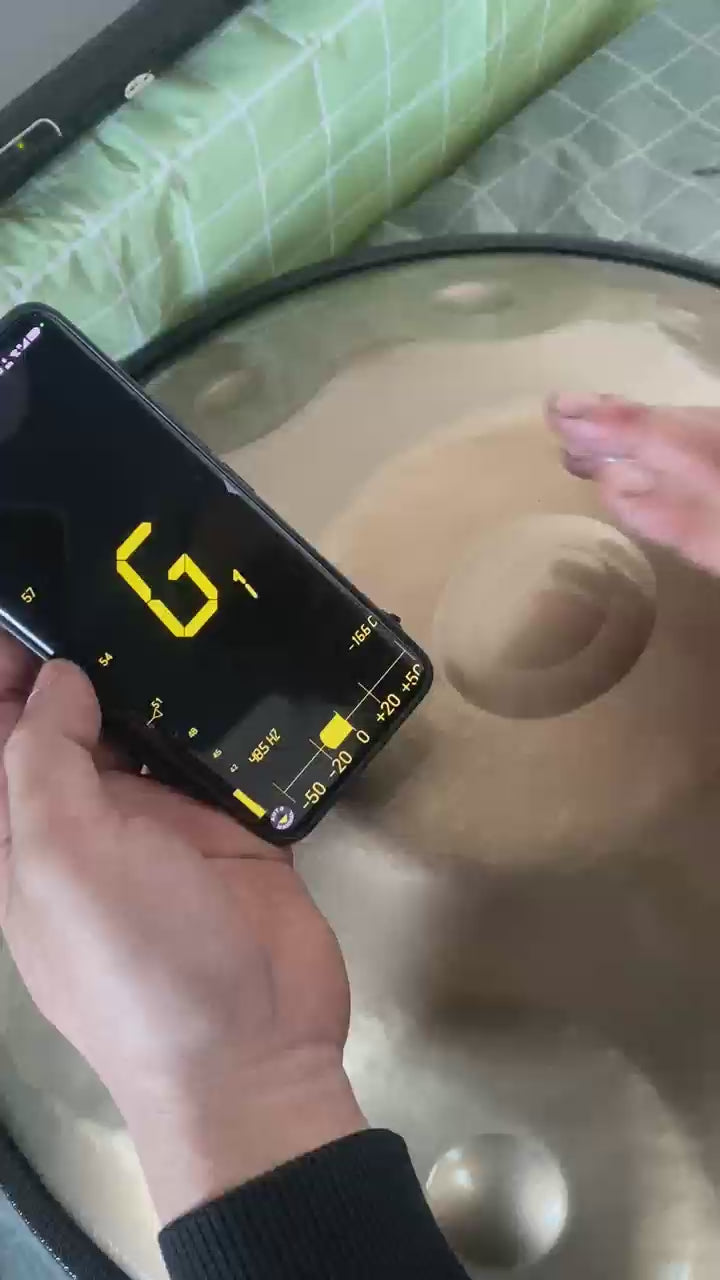Handpans are known for a variety of musical genres and their rich, resonant tone. Discover the captivating impact of the handpan drum on contemporary music.

Have you witnessed a sound that instantly takes you elsewhere? Imagine an instrument that creates sounds that speak to your innermost being by fusing cutting-edge technology with age-old craftsmanship. Discover the world of the handpan drum, a 21st-century invention that echoes ancient musical traditions while being a marvel of steel and skill.
The handpan is made of steel sheets that have been painstakingly hammered into shape. It has several indentations and tone fields that have been precisely adjusted to produce a harmonic spectrum. It is more than just a percussion instrument—every blow with the hand or mallet creates a lively resonance that opens up a universe of musical creativity.
The handpan’s adaptability extends across cultural and genre barriers, finding a home in ambient, world, and experimental music scenes as well as private gatherings and large stages. Its tactile and visual beauty, which is frequently enhanced by elaborate artwork that heightens its mystical enchantment, adds to its attraction in addition to its musical attractiveness.
With the handpan’s evolving sound capabilities and devotees’ embracing of its healing properties, this instrument is mesmerizing people all over the world. Come along on a voyage to discover the deep influence this amazing instrument has had on the development of modern music.
History of the Handpan Instrument
The Trinidad Steel Drum, a musical instrument that became well-known in Europe in the 1970s, was initially played by Felix Rohner. He and his business partner Sabrina Scharer, who had extensive knowledge of steel drums, established “PANArt”, a company renowned for making damaged musical instruments, in 1990. Felix and Sabrina did not formally introduce the “Hang” steel drum until 2001 at Musikmesse Frankfurt in Germany.
Despite great demand, there was only a limited supply each year because the instrument’s founders did not wish to create it in large quantities. Consequently, additional instrument manufacturers in the US and Europe started releasing different versions in 2007. Instead of calling these versions the “Hang,” they called them the “handpan”. Currently, there are more than 100 handpan producers in the world.
Playing Techniques
Playing needs a special and careful touch. The fingers and palms of the hands are used to play the handpan, in contrast to other drumming instruments. The player creates a rhythm and achieves the desired tune by combining tapping, sliding, slapping, and rolling movements.
Equipped with an extensive range of dynamics and tone alterations, this instrument is also highly expressive. Gamers may create a variety of noises, from delicate and mild to loud and strong, by only small adjustments in touch and pressure. However, since it does not require any knowledge of music theory, it is a simple instrument to start playing.
Handpan Music Characteristics
Melodic and Harmonic Richness
The architecture of the handpan, with its precisely adjusted tone fields, enables the development of complex melodies and full harmonies. Because each tone field produces a distinct pitch, musicians can create intricate melodic patterns.
Resonant Sound
The handpan has a calming, entrancing sound when it is struck. It sounds like a bell. Its steel composition and spherical shape give it a distinctive sound that can be loud and percussive or delicate and soothing.
Dynamic Range
The tones produced by handpans range widely, from soft, intimate notes to strong, resonant tones. Because of their adaptability, musicians can convey a wide spectrum of feelings and moods through their music.
Rhythmic Possibilities
Handpans are mainly melodic instruments, but they can also have rhythmic effects. Players can add a percussion element to melody lines by using their hands or mallets to produce rhythmic patterns.
Expressive Techniques
Skilled handpan players use a variety of methods, including vibrato, slides, and muted strokes, to improve expression. These methods enable performances to have deep emotional resonance and complex interpretation.
Music Versatility
Handpan instruments exhibit exceptional adaptability and appeal to a wide range of audiences by displaying their amazing versatility across a spectrum of musical genres and venues. Here's how they excel in different musical settings:
Ambient & Meditative Music
These tracks are well-liked for yoga courses, meditation sessions, and relaxation because of their calming tones and soft vibrations that inspire calmness.
World Music Fusion
Handpans fit right in with many world music genres because of their roots in Trinidad and Tobago's steelpan tradition. They blend in seamlessly with instruments from many civilizations, adding a worldly mix of sounds to songs.
Experimental & current Music
In the realm of current music, handpans are imaginatively employed to create novel auditory environments. They provide avant-garde compositions and experimental music with a new depth by contributing inventive melodies and textures.
Collaborative Performances
Handpans are a flexible partner for a variety of instruments in an ensemble, including guitars, flutes, percussion, and electronic music devices. Their capacity to meld with a variety of tones improves musical expressiveness and ensemble dynamics.
Solo Performances
Handpans are captivating solo instruments that enthrall audiences. Solo improvisations and creations by musicians captivate listeners with their expressive skills, dynamic range, and complex melodies that display their virtuosity.
Therapeutic Benefits of Handpan
Handpans are more than simply musical instruments; they have numerous psychological and therapeutic advantages. They have the following beneficial effects on mental health and well-being:
1. Stress Reduction
Handpans’ calming, contemplative sounds help promote relaxation and lower stress levels. People can relax and decompress from the stresses of daily life by playing an instrument or listening to music that fosters serenity.
2. Emotional Expression
Handpans allow for the musical expression of emotions. Gamers can express a vast spectrum of feelings, from vibrant delight to reflective melancholy, encouraging emotional release and catharsis.
3. Focus and attention
Using handpans takes both attention and focus. Using the device to practice promotes mindfulness and present-moment awareness, which gradually enhances concentration and attention.
4. Therapeutic Healing
Handpans are used in music therapy sessions to assist in the processes of therapeutic recovery. The resonance tones and vibrations of the instrument can improve general well-being, assist in trauma healing, and facilitate emotional processing.
5. Self-Expression and Creativity
Handpans enable people to use music as a creative outlet. By experimenting with melodies, rhythms, and improvisations, players can foster personal development and self-discovery.
6. Physical Relaxation
Handpan playing entails soft hand strokes and motions across the surface of the instrument. These movements can ease tense muscles and encourage physical relaxation.
Conclusion
In essence, the handpan drum is more than just a musical instrument; it represents a harmonious blend of tradition and innovation that has deeply enriched the musical landscape. Its ability to produce mesmerizing melodies and evoke profound emotions has captivated listeners worldwide. Beyond its musical allure, the handpan’s therapeutic benefits and community connection underscore its profound impact on individual well-being.


